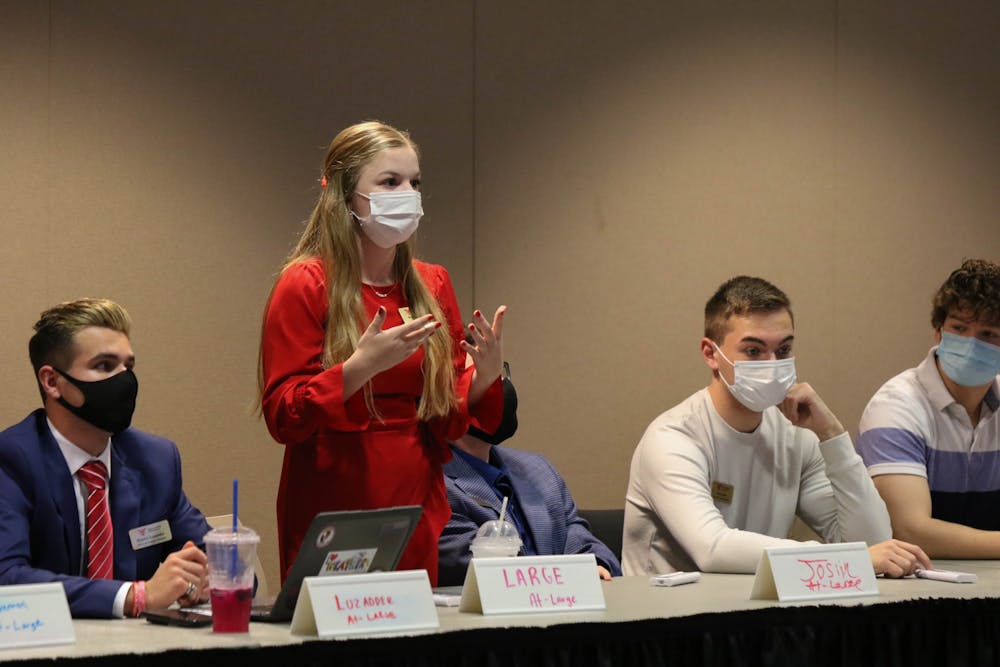Ball State’s Student Government Association (SGA) introduced a new resolution that proposes to raise the on-campus minimum wage.
The resolution aims to increase the minimum wage to $9 an hour. Currently, the minimum wage for on-campus student workers is $7.25.The resolution states a student working a minimum wage job would be able to pay for less than 20 percent of Ball State’s average tuition and costs with their wages alone. According to Ball State’s website, an Indiana resident living on campus can expect to pay about $21,086 in tuition and fees before financial aid.
Daily News calculations — accounting for 17 weeks each semester working at $7.25 for 20 hours a week — found student workers paid minimum wage would make about $4,930 in a fall and spring semester combined before taxes, which is about 23 percent of the total tuition and fees stated on the university’s website for Indiana residents.
The resolution also stated other schools in the Mid-American Conference (MAC) have higher wages that range from $8.55 to $15 an hour.
Senators Brenna Large, John Wilcox and Andrew Hopkins authored the resolution.
Hopkins said if the resolution passes the SGA vote, it will then go to Ball State’s University Senate for review and an additional vote. After the University Senate, it will be reviewed by the Board of Trustees.
Hopkins, a member of Young Democratic Socialists of America, said he was inspired to author the resolution after reading a Daily News article that included stories of students who were struggling to make ends meet.
“Honestly, that really kind of upsets me that they have to go to that length to basically live and I want to help change that,” Hopkins said.
The resolution currently has 141 student sponsors, who are non-SGA members who support the resolution passing. Hopkins said student sponsors help strengthen the argument of the resolution to show university officials the resolution has support outside of SGA. SGA will vote on the resolution at a later date.
RELATED: Ball State students call for an on-campus minimum wage raise
SGA also introduced three new amendments. Two of the three amendments are focused on justices of the Student Judicial Court.
The first amendment proposed justices be allowed to “terminate their service prior to the end of an academic calendar.”
This amendment will give justices the ability to resign if they are dealing with “personal illness or distress.” Currently, the other branches of SGA are not prevented from resigning in the middle of the academic year. However, the chief justice will not be able to resign.
The second amendment proposes to decrease the total number of allowed justices to seven including the chief justice. Currently, SGA’s constitution states there should be seven to 17 justices serving in addition to the chief justice position. This amendment won’t affect any current student judges, as there is currently only one serving on the court.
The third amendment proposed that any member of the Governmental Affairs and Community Advancement (GACA) committee can attend the Muncie City Council meetings to fulfill a current responsibility of the committee whip. Only the committee whip is currently required to attend these meetings. The GACA committee chair will appoint the committee member to attend council meetings and report back to SGA on decisions that will affect Ball State.
All three of these amendments will be voted on at a later date.
SGA voted to pass an amendment for executive board requirements introduced Nov. 11.
Two amendments were proposed to the original amendment. One approved amendment to the original amendment requires the vice president and president positions to attend three full semesters of classes at Ball State, as opposed to the failed amendment.
RELATED: Ball State SGA votes down elections code amendment, elects President Pro Tempore
The failed amendment proposed that the president, vice president and the President Pro Tempore all attend two full semesters of classes at Ball State.
The original amendment passed 28-7 with two abstentions.
Contact Hannah Amos with comments at hannah.amos@bsu.edu or on Twitter @Hannah_Amos_394. Contact Grace McCormick with comments at grmccormick@bsu.edu or on Twitter @graceMc564.





